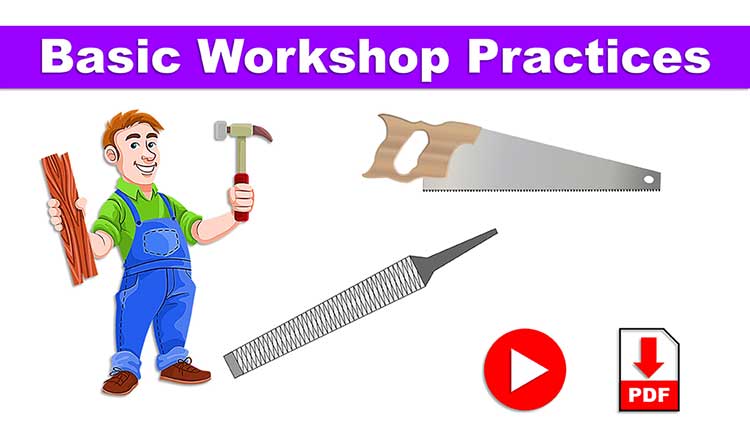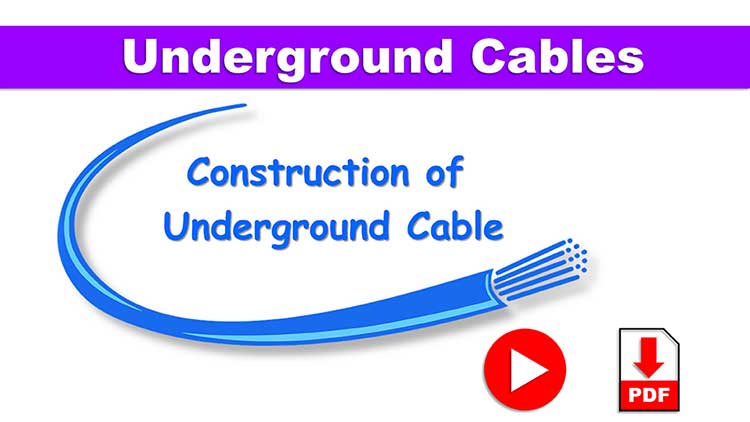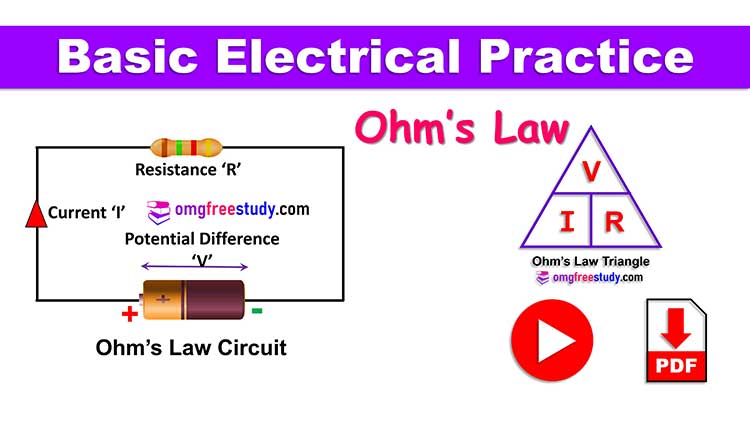For satisfactory operation of an indicating instrument three forces/ Torque are essentially required, these are as follows.
- Deflecting Force
- Controlling Force
- Damping Force.
Table of Contents
ToggleDeflecting force or Deflecting Torque:
This torque produce the required amount of force in the pointer to move from its `zero’ position, when the instrument is connected to the supply.
To obtain this force in an instrument, different effects of electric current use such as magnetic effect, heating effect, chemical effect etc.
Without deflecting torque pointer of an instrument cannot be move for any value.
Controlling force or Controlling Torque:
Controlling torque is essential to control the movement of the pointer and to ensure that the magnitude of the deflection of the pointer is always the same as given value of the quantity to be measured.
The controlling force is always acts in opposite direction to the deflecting force. And also return the pointer to its initial zero position when the instrument is disconnected from the supply.
The controlling force could be produced by any one of the following method.
- Gravity control
- Spring control
Gravity control:
In this method, small adjustable weights are attached to the opposite extension of the pointer as shown in figure.
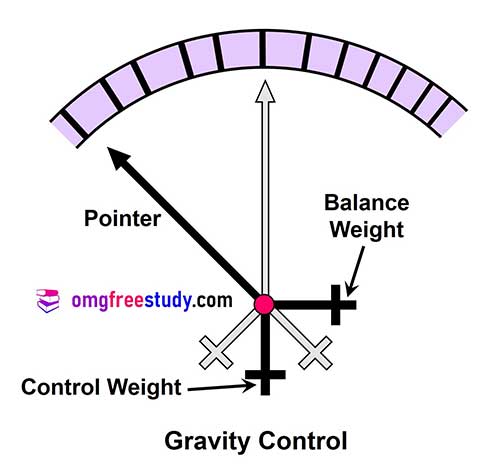
When the instrument is disconnected from the supply, the control weight and the balance weight attached to the opposite end of the pointer make the pointer to be at zero position.
When the instrument is connected to the supply, the pointer moves in a clockwise direction, thereby displacing the weights shown in figure.
Due to the gravitational pull, the weights will try to come back to its original position.
Spring control:
The most common arrangement of two spring control utilizes. Which is made up of phosphor-bronze or beryllium copper spiral hair-springs A and B, the inner ends of which are attached to the spindle.
Both springs A and B are wound in opposite directions so that when pointer is deflecting, one spring winds up while the other unwinds. Therefore the controlling force is produce due to the combined torsions of the springs.
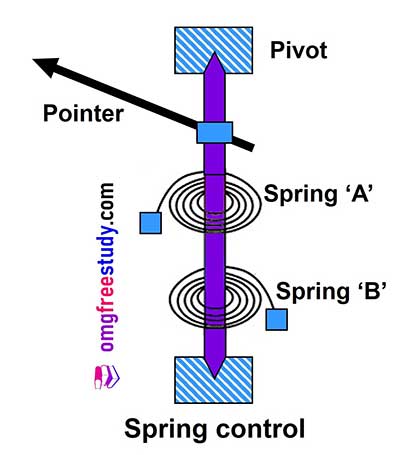
Essential property of springs are:
- can be wound or unwound several times without losing the tension called High resistance to fatigue.
- should not get affected by external magnetism it is Non-magnetic properties.
- Low temperature coefficient (do not elongate due to temperature)
- Low specific resistance
Spring controlled instruments have the following advantages over the gravity controlled instruments.
- The instruments can be used in any position
- Control springs help in leading in and out the current to the moving coil of the instruments.
Damping force or Damping Torque:
This force is necessary to bring the pointer to rest in its final deflected position quickly. Without such damping, the combination of deflecting torque and controlling torque makes the pointer to oscillate about its final deflected position for some time. It resulting in a waste of time while taking the reading.
MCQ Question PDF for Module 11: Measuring Instruments
- Instruments – Scales – Classification – Forces – MC and MI meter
- Wattmeter
- 3-phase Wattmeter
- Tong – tester (clamp – on ammeter)
- Extension of range of MC voltmeters – loading effect – voltage drop effect
MCQ Question PDF of Measuring Instruments
This MCQ Question Is Taken From Bharat Skill Website Published By NIMI.
Objective questions on the above topics explain in the video on YouTube.
